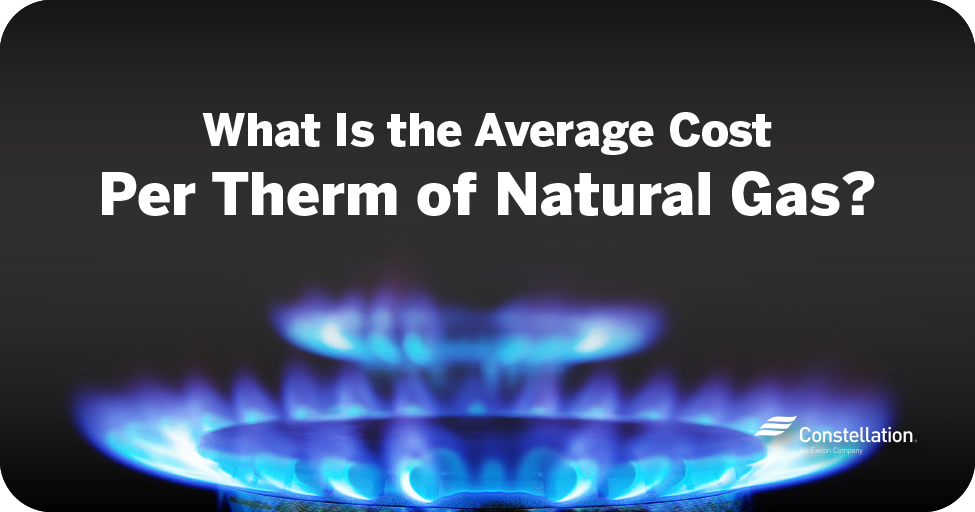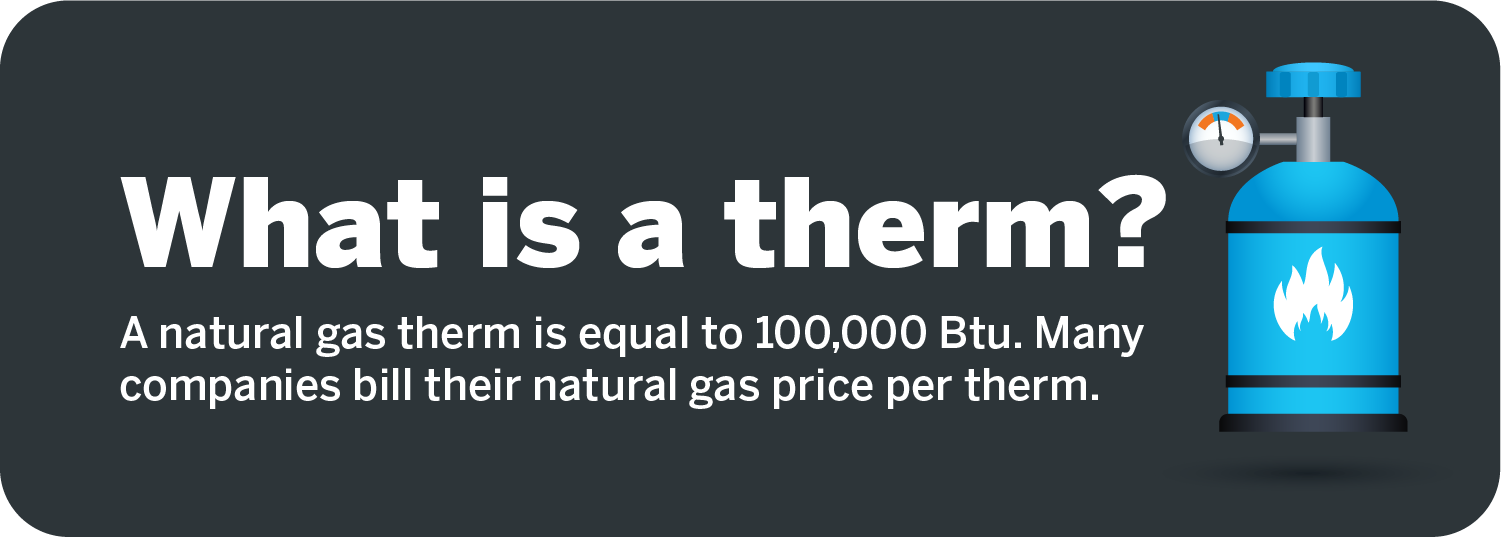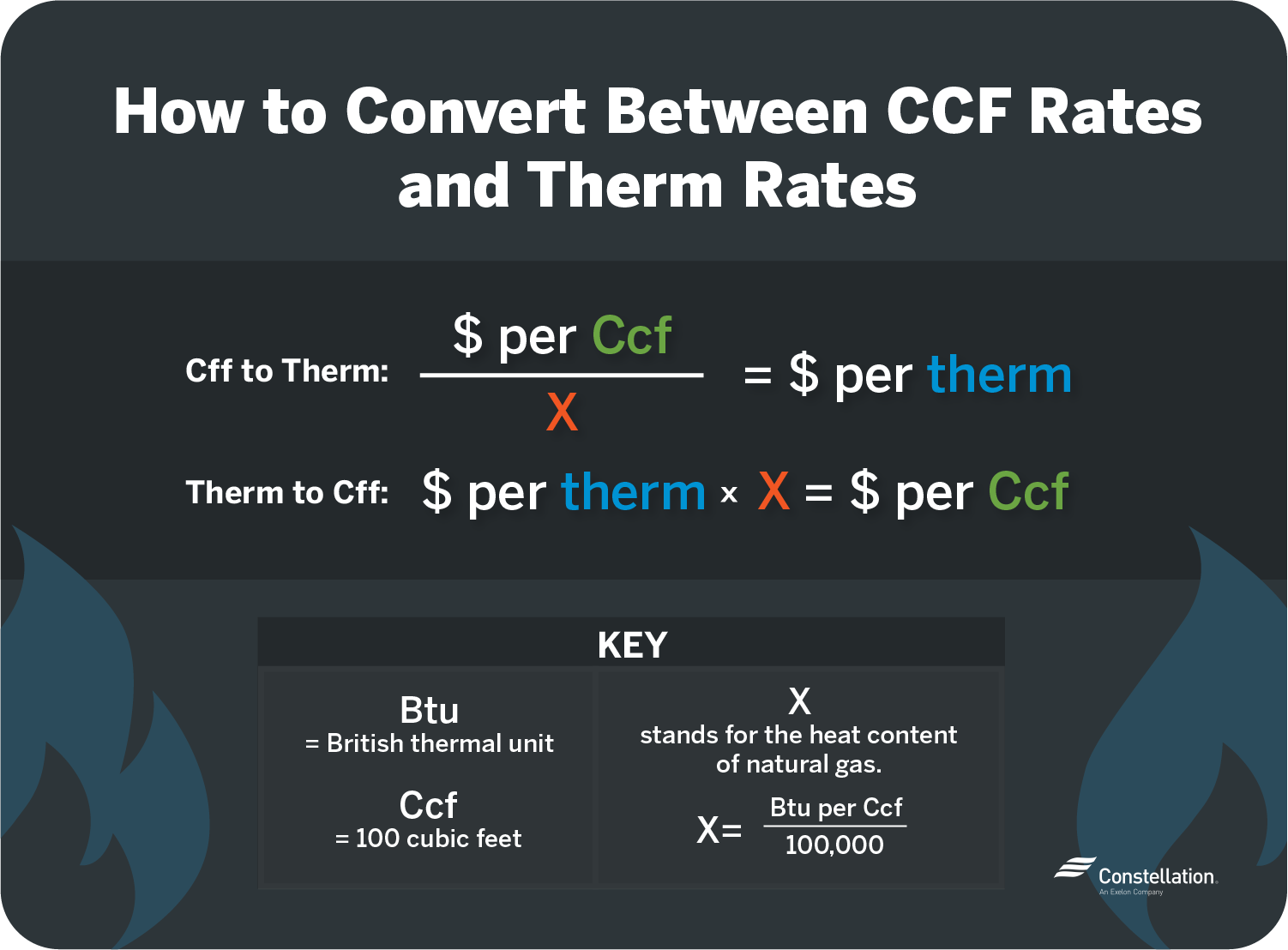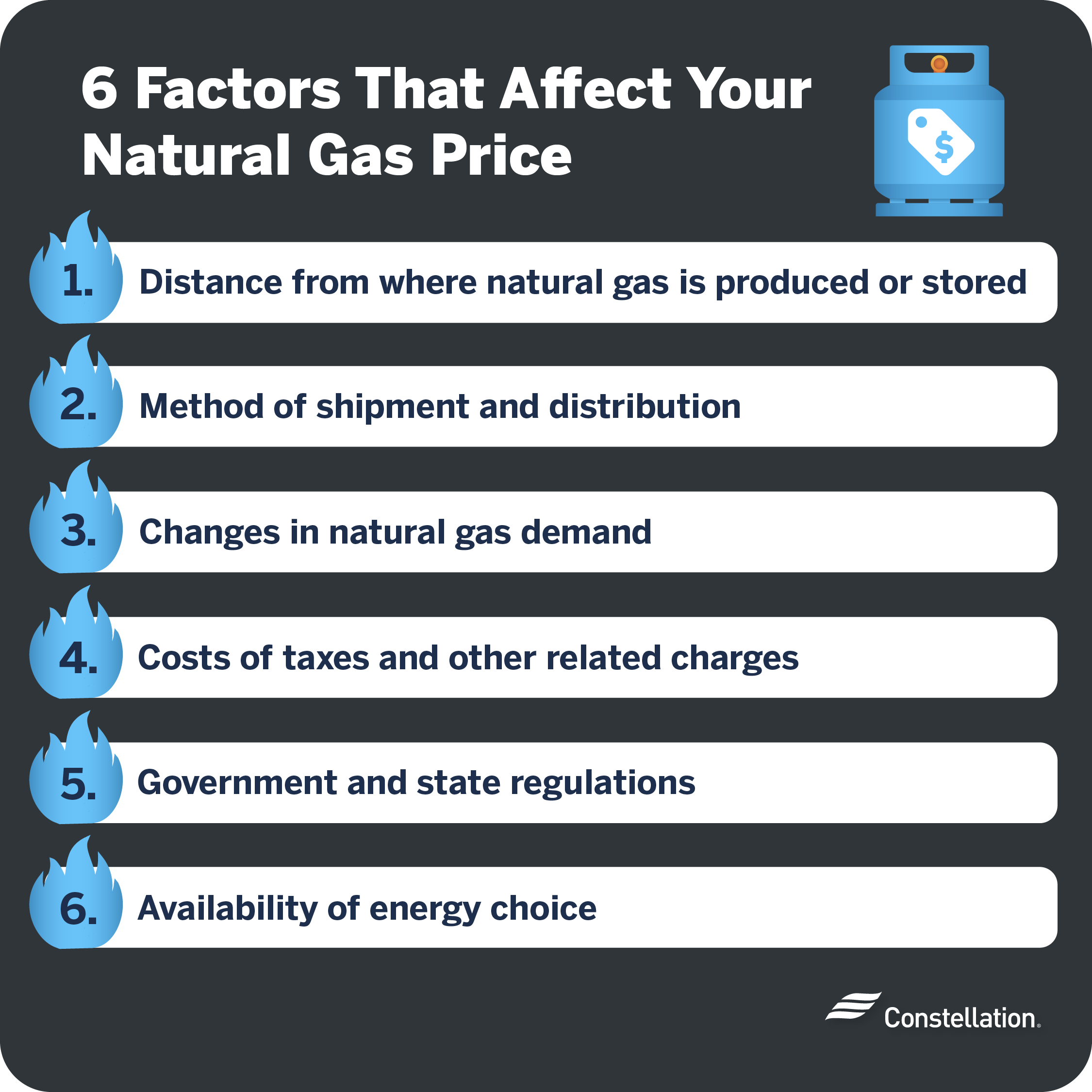
- Category:
Energy Choice -
Last updated:
March 25, 2024
Average Natural Gas Cost Per Therm
Natural gas is a common power choice for many American homes. It’s versatile, running appliances like clothes dryers, hot water heaters, stoves, and ovens. Many homes rely on natural gas for heating and cooling as well. And it emits less than half the carbon dioxide as coal, making natural gas a clean-burning fossil fuel. Learn more about what natural gas is here.
Many people aren’t aware of how power providers price and bill for natural gas. Yet you will likely see natural gas cost per therm among the most common terms on your monthly bill. Here’s an explanation that will help you understand your bill and usage.
Jump to section:
- How natural gas is measured and priced
- Average natural gas cost per therm
- Factors affecting natural gas prices
- Compare natural gas prices for your home
How is natural gas measured and priced?
Before diving into data about price per therm of natural gas, it’s helpful to understand what is a therm.
What is a therm of natural gas?
A therm is a way to price natural gas. Many suppliers and utilities bill their natural gas price per therm.
You can measure natural gas use in several different ways. You might have seen terms like “therm,” “BTU” and “CCF.” Here is what they mean.
A BTU measures the heat value of an energy source. It’s short for British thermal unit, which is the amount of heat it takes to raise the temperature of 1 pound of water by 1 degree Fahrenheit. A natural gas therm is equal to 100,000 BTU.
CCF is short for one hundred cubic feet (C is the Roman numeral for 100). CCF measures the quantity, or volume, of natural gas.
The annual average heat content of natural gas in the United States is 1,036 BTU per cubic foot according to 2022 statistics. The heat value of 100 cubic feet of natural gas varies slightly by location, however it averages out to 1.036 therms.

What’s the average natural gas cost per therm?
The average price per therm of natural gas varies considerably by season and location. In January 2024, the national average price was $1.452 per therm. The price per therm a year earlier in 2023 was $1.819.
In general, because demand for heat is higher during winter months, it affects is the price of a therm of gas. The second driver of price is location. Hawaii, for example, has no local source for natural gas. Because it must be shipped in, prices are higher, $5.657 per therm as of January 2024. By contrast, Midwesterners have easier access to supplies, and thus pay much lower prices. A natural gas customer in Chicago will pay just $1.005 per therm as of January 2024.
Converting cubic feet to therms to understand how much natural gas is per therm
How much does natural gas cost in your area? Calculating your natural gas per therm rates is easy, even if your bill doesn’t provide a natural gas price per therm. To make things easier, we will use the national average heat content for gas of 1.036 therms per cubic foot.
To figure out your natural gas cost per therm, you’ll do some simple math. Typical gas bills will quote a price in dollars per MCF, that is 1,000 cubic feet. To get the price per therm of natural gas, divide the price you pay by 10 to get the cost for 100 cubic feet of natural gas, since 100 cubic feet of natural gas equals a therm. Here is where you can learn more about understanding your natural gas bill.
Perhaps you want to know the answer to the question: How much does natural gas cost in CCF? Or if you want to convert to metric, or to use other ways of measuring, the U.S. Energy Information Administration provides a calculator.

Given the growing popularity of natural gas, it makes sense to understand how usage is measured and priced. When you know the natural gas price per therm, you can begin to manage how efficiently you’re using this resource.
6 factors that affect your natural gas price
Many factors affect how much a therm of natural gas costs. The market is always changing. Since natural gas prices can be volatile, exploring your options may be a good idea. Here are some of the things that affect natural gas cost per therm.

1. Distance from where natural gas is produced or stored
Unlike electricity, which is generated nearby, natural gas has to be shipped from where it’s produced and stored. Distance from its source explains why natural gas is more expensive in Hawaii and typically cheaper in Idaho and North Dakota.
2. Method of shipment and distribution
How natural gas is shipped, how long it is stored, and the distance it must travel affects the price. Pipelines are the most economical way to move gas from distribution centers to homes and businesses. Trucks, trains, and ships are more expensive alternatives.
3. Changes in natural gas demand
Like every commodity, supply and demand play a part. During times of high demand and low supply, the price goes up. Winter season usually sees high demand during cold snaps. When the economy is booming, businesses need more power for their operations. Canceled pipelines and delays in shipping facility construction can slow supply and possibly push prices higher in the future.
4. Costs of taxes and other related charges
Taxes can account for a significant part of what you pay for natural gas. Some localities are raising taxes to pressure users to seek alternatives. Others offer subsidies, as natural gas is cleaner burning than many other fossil fuels. If you live in an area where natural gas is plentiful and inexpensively piped to users, you will pay less than a customer in Hawaii who must depend on gas being brought in by ship.
5. Government and state regulations
In addition to taxes, government regulation can make gas more or less expensive. Ohio has enacted legislation that allows natural gas companies to add a surcharge to bills to cover the cost of infrastructure upgrades. Some states allow fracking for more plentiful natural gas supplies, while others have banned the practice.
6. Availability of energy choice
In areas where consumers have a choice of companies providing natural gas, the price per therm of natural gas can be lower. Competition may drive rates lower and having alternative terms of service, such as long-term fixed rates benefits the varying needs of customers. Learn when to lock in your natural gas rate. Better, more responsive service is yet another benefit. Energy choice empowers natural gas users with choices as to who your natural gas provider is.
Compare natural gas prices for your home
The best way you understand natural gas cost per therm for your home or business is to compare prices and terms. If you live in a state where you can benefit from choosing your provider, also compare the reputation of the suppliers you are considering. Here you can learn more about how to choose the right natural gas plan.
Constellation works hard to earn your trust and your business. We offer several natural gas options. Check to see if we are in your service area. You can also view our current natural gas rates, compare natural gas options, and decide if switching to Constellation makes sense.




